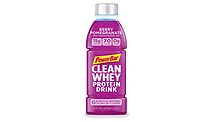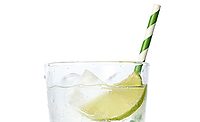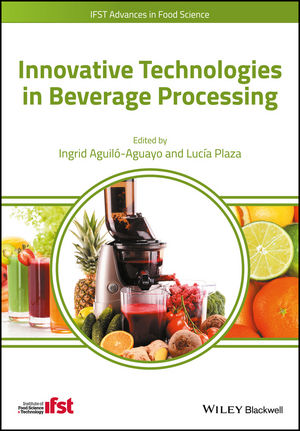Stevia, erythritol and monk fruit surging in popularity
Ingredient suppliers release new products


Designed exclusively for ready-to-drink tea products, PureCircle’s Sigma-T is a natural-origin, zero-calorie sweetener that offers a taste parity to sugar at mid to deep sugar reduction levels. (Image courtesy of PureCircle)




When the U.S. 2015-2020 Dietary Guidelines were released earlier this year, one of the key recommendations for a healthy eating pattern stated that individuals should consume less than 10 percent of calories a day from added sugars. To help consumers achieve this recommendation, beverage formulators are turning to natural sweeteners like stevia, erythritol and monk fruit as a way to cut calories and improve taste in non-alcohol drinks.
Nearly 2 billion adults worldwide qualified as overweight in 2014, and 600 million as obese, according to the World Health Organization (WHO), while the American Diabetes Association reports that 1.4 million Americans are diagnosed with diabetes each year.
Published online Jan. 6 in Lancet Diabetes & Endocrinology, a new modeling study from the United Kingdom suggests that small annual reductions in the sugar content of sugar-sweetened beverages of just less than 10 percent — totaling 40 percent by 5 years — would result in about a 2-percentage-point reduction in obesity overall in the United Kingdom, leading to a drop of more than a quarter of a million new cases of type 2 diabetes over the subsequent two decades.
Recognizing the need for solutions to the pandemic and in response to health-conscious consumers seeking better for-you, more natural clean-label products, beverage formulators are innovating new ways to cut calories, replace or reduce sugar and improve taste.
Stevia surge
Experts note that plant-based sugar substitutes like stevia sweeteners, which contain no calories and are naturally sourced from the stevia plant, are gaining traction since becoming commercially available in the United States in 2008.
Oak Brook, Ill.-based PureCircle’s Global Director of Technical Development and Innovation John Martin says that the various steviol glycosides that comprise the stevia plant offer numerous taste profiles.
“They supply different sensory attributes and potency levels, in addition to varying sweetness profiles in terms of onset and lingering effects,” he says. “Every product is different and how stevia performs in a given application depends on its interaction with the flavors and other components within the application. Therefore, every stevia solution will be unique. Finding the right stevia solution will depend on the formulation goal, pH level, flavor system and extent of calorie reduction.”
Bellingham, Wash.-based Sweet Green Fields Chief Executive Officer Dean Francis also notes the growth of stevia sweeteners. “In the past two years, stevia has become one of the Top 5 non-nutritive sweeteners used in global food and drink launches,” he says. “Stevia’s natural provenance has ensured fast growth in its usage in various applications. Product launches tracked with stevia increased more than four times from 2010 to 2013.
“Soft drinks represented a quarter of new product launches with stevia in 2014,” he continues. “Facing the growing population of obese and overweight [individuals], WHO has cut the recommended daily intake of sugar from 10 percent to 5 percent of daily energy intake. Sugar taxes are also gaining ground in many countries.”
Steviva Ingredients’ President Thom King echoes similar sentiments. “We have seen an over 200 percent year-over-year growth since 2008,” he says. “We attribute this to beverage manufacturers seeking out solutions for clean-label sugar reduction driven by consumer demand.”
The Portland, Ore.-based company offers a proprietary stevia erythritol blend — Erysweet+ with stevia — that has become the go-to sweetener for beverage manufactures trying to reduce sugar content while maintaining a clean label, according to King. “Our latest stevia, monk fruit and erythritol blend, MonkSweet+, is quickly picking up pace,” he adds.
Both stevia and erythritol have been approved generally recognized as safe (GRAS) by the U.S. Food and Drug Administration (FDA).
With 0.2 calories in a gram, compared with sugar, which has 4 calories in a gram, erythritol also has a zero ranking on the glycemic index, compared with sugar’s 65 ranking. The sugar alcohol also does not affect blood sugar levels or cause insulin spikes. Yet, experts note that because erythritol requires higher concentrations of the product to achieve desired sweetness in a beverage, it often is used in combination with stevia or monk fruit.
Indigenous to China and Thailand, monk fruit, a green, round melon-looking fruit, is as much as 500 times sweeter than sugar with zero calories. In an effort to lessen the consumption of sugar-sweetened beverages in schools, Ingredion Inc.’s Senior Associate for Senior Applications Kasi Sundaresan notes that monk fruit juice is being used in school lunch programs at certain school districts in St. Louis and Omaha, Neb.
“The number of new product launches with natural sweeteners of stevia/monk fruit/erythritol [is] on the rise,” he says. “… It’s mainly due to their natural perception versus other high-potency sweeteners such as aspartame, acesulfame-K and sucralose.”
With added sugars under fire, ingredient suppliers are helping beverage manufacturers and their consumers stay ahead of the sweetness curve by offering a range of zero-calorie sweeteners.
For example, Minneapolis-based Cargill Inc. offers ViaTech stevia sweetener and Zerose erythritol to “help achieve reformulation options that taste great and considerably reduce added sugars,” Global Business Development Manager Scott Fabro says.
Noting that the stevia leaf extract is 250 times sweeter than sugar, Fabro says that the company has been working to develop a sweetener solution that serves the food and beverage industries.
“Cargill scientists have spent hundreds of thousands of hours working with the stevia leaf to understand how the different steviol glycosides found within it work alone and in combination,” he says. “ViaTech offers a clean sweetness in even some of the most difficult-to-perfect zero-calorie and reduced-calorie food and beverage formulations. … Our Zerose erythritol, the first poly to be industrially manufactured by a fermentation process, starts as a simple sugar-rich substrate, which is fermented using yeast to yield erythritol.
“The product is then crystalized to 99.5 percent purity from the filtered and concentrated fermentation broth,” he continues. “The sweetness found in the stevia plant is released by steeping its dried leaves in water, filtering and separating the liquid from the leaves and stems, and further purifying the plant extract with either water or food-grade alcohol — all conventional plant extraction methods.”
Last February, London-based Tate & Lyle released its Dolcia Prima Allulose. “[The sweetener] can be used in combination with non-caloric, high-potency sweeteners in beverages to reduce calories and sugar while maintaining great taste,” Senior Vice President of Global Applications Luis Fernandez says.
Similar to erythritol, allulose also is being used as a flavor modifier in beverages. Another product in Tate & Lyle’s arsenal is its zero-calorie Tasteva stevia sweetener, which was preferred by nearly two out of three consumers (63 percent) versus rebaudioside A (Reb A) in an independent consumer taste-test conducted in May 2014, Fernandez says.
Ingredient suppliers also are developing products with specific beverage categories in mind. Celebrating 15 years of “everything stevia,” Pure Circle maintains a portfolio of 17 products, including its Matrix Solutions family. Among the offerings within Matrix Solutions is Sigma-T, a natural origin, zero-calorie sweetener made for the tea market, which reduces astringency and bitterness; and Sigma-D, a dairy-specific ingredient with a clean sweetness profile and preference to Reb A on key attributes, such as a bitterness and a licorice aftertaste.
Additionally, in December, PureCircle launched its Zeta family, which closes the taste gap for low-to-no calorie products with Reb M, Reb D and other sugar-like glycosides, the company says. A new innovation exclusive for tabletop products is due to be released soon, the company adds.
PureCircle notes that its leaf-based supply chain is at the cornerstone of its innovation, with more than 100 agronomists educating small- and medium-scale farmers throughout the world on breeding, harvesting, and extracting the plant in Kenya, Paraguay and China, Senior Global Marketing Manager Carolyn Clark says. “Growing stevia sustainably is our goal, and we look for opportunities to expand and diversify cultivation in other countries throughout the world,” she adds.
When it comes to sourcing, Sweet Green Fields says it selects its stevia plant seeds from 400 varieties and controls the quality of the raw material at inception. “In terms of growing stevia, we are moving forward in areas such as Vietnam, Kenya, Europe and Brazil, not just China and the U.S.,” Francis says. “Last summer, we launched a breakthrough stevia product, Intesse, a proprietary, [Joint Expert Committee Report of Food Additives] (JECFA) compliant non-GMO blend of steviol glycosides.
“It delivers a clean and smooth taste especially at medium to high concentrations where conventional stevia extracts usually exude bitterness,” he continues. “The sugar-like taste and peak solubility make Intesse an ideal stevia extract for formulating a flavorful diet drink without any lingering aftertaste.”
Masking bitterness
Even with advances made in utilizing stevia in different formulations, experts note that masking ingredients have come a long way in alleviating taste challenges. However, reducing bitterness and licorice notes requires two components: an effective masking agent and a competitive cost. Sweet Green Fields’ Chief Science Officer Mel Jackson notes these are necessary because masking agents are expensive and sometimes must be used at relatively high concentration to achieve a desired effect.
“Over the past year or so, we’ve made some significant technical breakthroughs in this area; developing stevia extract compositions that don’t require masking agents,” he says.
“Sweet Green Fields receives many requests from customers who are using commodity stevia and [are] just not achieving the desired sweetening and taste profile result that they need to attract customers,” Francis notes. “Low-cost smaller companies do not have access to sophisticated masking technologies and struggle in this area. … We demonstrate that the use of masking agents can be largely mitigated or completely avoided by using stevia extract compositions such as Intesse, Natrose Flavor and other proprietary stevia compositions that don’t have the taste baggage typical of commodity stevia.”
When formulating with maskers, PureCircle’s Martin notes that they should be targeted toward a specific formulation challenge. “Otherwise, there is a risk of suppressing the overall flavor profile of your product or creating an unbalanced taste experience for your customers,” he explains. “The beverage market is very dynamic and formulators are being asked to include a wide range of ingredients, including bioactive ingredients, into their formulation. This increases the demand for maskers to handle certain negative taste impacts.”
Fiber also can be used for masking properties. Chicago-based Archer Daniels Midland Co. (ADM) and Itasca, Ill.-based Matsutani America Inc.’s Fibersol not only supplies soluble fiber to a beverage, but it can be used as a masking agent. “There are functional benefits when using Fibersol,” says Doris Dougherty, Fibersol technical service representative, WILD Flavors & Specialty Ingredients, ADM. “Even at low usage levels, Fibersol can be used to round out undesired bitterness and offnotes that can accompany high-intensity sweeteners and do so without contributing a flavor of its own.”
It also can be used to improve mouthfeel and flavor profiles, while maintaining calorie and sugar reductions, Dougherty adds.
Under the stevia umbrella, Sweet Green Fields offers Natrose Flavor, a Flavor and Extract Manufacturers Association (FEMA) and GRAS-flavor modifier that acts as a synergist with sugar, stevia extracts and monk fruit, Francis notes.
“Natrose Flavor can be used in combination with other sweeteners to enhance the perception of sweetness while reducing calories and [the] overall cost of the sweetening system in the application,” Francis says.
Because stevia’s sweetness profile is not linear, it can be challenging to meet the sweet spot consumers expect. “Erythritol has a lower sweetness than sugar or [high-fructose corn syrup] HFCS as well as some limitations with solubility — 70 percent as sweet as compared to sugar,” Ingredion’s Sundaresan says.
He notes that Ingredion’s Enliten Reb A stevia sweeteners range from Reb A 50-97 percent in content. “From plant cultivation through growing, extraction and purification, all Enliten Reb A production steps are exclusively owned and controlled by Ingredion in one geographic location,” he says.
The changing landscape
Although Steviva Ingredients doesn’t use traditional flavor-masking components, the company seeks to find the perfect sweetness curve using natural high-intensity sweeteners blending with bulking sweeteners such as erythritol and pre-biotic fruit fibers, like the ones found in inulin.
In addition to Erysweet erythritol, MonkSweet+ monk fruit-stevia sweetener and Nectevia fortified agave nectar with stevia, Steviva Ingredients recently released its CocoSweet+ stevia fortified organic coconut sugar, King says.
The latest innovation — AlloSweet+ D-Allulose in 60 mesh or 100 mesh formats — is expected to launch later this year. “The 100 mesh sweetener has a density comparable to 10 times sugar,” King explains. “AlloSweet+ pairs D-Allulose with proprietary stevia extracts, which provides optimal sweetness and functionality while maintaining clean-label sugar reduction of over 90 percent.”
When it comes to handling newer beverage ingredients, including high-potency sweeteners like stevia and monk fruit, Ingredion’s Sundaresan notes that processing automation can help with mixing challenges like solubility, caking and dispersion. “The measurement can be very sensitive. Creating automated systems that can easily measure and contain these ingredients can save time and money,” he explains.
Experts note that the use of stevia as well as erythritol and monk fruit will continue to gain momentum as the use of stevia grows along with technical breakthroughs on taste.
“Since 2010, beverage product launches with stevia have grown by 38 percent per year,” PureCircle’s Clark notes. “That growth is significant for the category and we are thrilled to be at the forefront of it.”
Looking for a reprint of this article?
From high-res PDFs to custom plaques, order your copy today!












